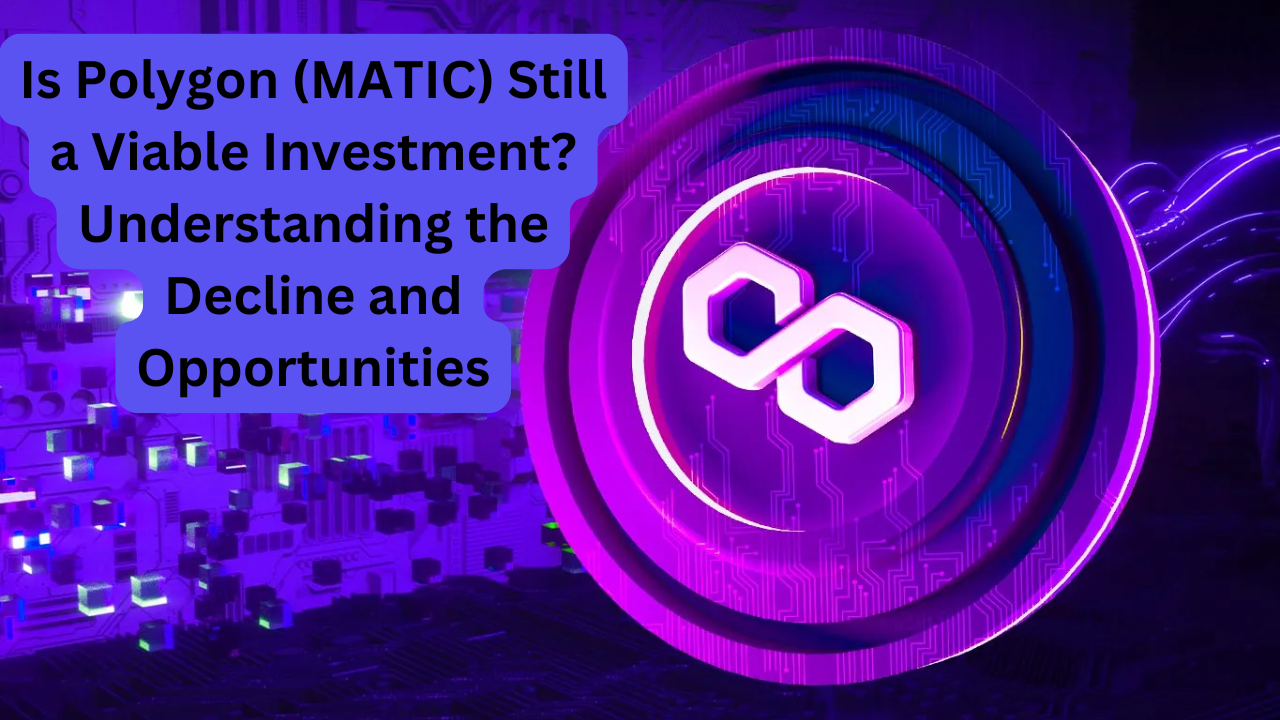Polygon (MATIC) has faced significant challenges recently, underperforming Bitcoin by over 90% in the last 1-2 years. This raises the question: is this a buying opportunity or a sign of deeper issues? In this article, we’ll explore how to navigate Polygon’s decline and uncover potential investment strategies.
Understanding the Current Market Dynamics
MATIC Tokens Overview
It’s important to note that there are now two MATIC tokens:
- MATIC (Polygon): With a market cap of approximately $2.8 billion.
- Original MATIC Token: With a market cap of $1 billion.
This brings the total market cap for MATIC tokens to $3.8 billion. However, the trading volume on the MATIC chain was only $134 million in the last 24 hours. This volume is significantly lower compared to other layer-two solutions like Arbitrum ($441 million) and Base (close to $1 billion).
Market Cap vs. Trading Volume
The disparity between market cap and trading volume raises questions about MATIC’s current valuation. With such a low trading volume, the high market cap seems unjustified. The bearish sentiment in the market is compounded by the introduction of inflationary tokenomics with the new MATIC (P) token. After months of no supply expansion, the introduction of P has reignited concerns about inflation.
Evaluating Investment Opportunities Amidst Decline
Given the current landscape, how can investors take advantage of Polygon’s decline?
Shorting MATIC: A Viable Strategy?
Shorting MATIC could be a potential strategy; however, it comes with inherent risks. If the entire cryptocurrency market rallies, MATIC’s price might still increase. Analyzing the price relative to Bitcoin reveals that MATIC has underperformed Bitcoin by 76% this year.
Most centralized exchanges allow for shorting relative to the US dollar, which increases risk due to the volatile nature of crypto assets. Therefore, alternative strategies should be considered.
Exploring Decentralized Finance (DeFi) Solutions
One of the more productive ways to navigate the decline in MATIC is through decentralized finance (DeFi). Using a lending and borrowing platform like Aave, investors can take advantage of MATIC’s decline by following these steps:
- Supply Collateral: Start by supplying collateral like USDC or wrapped Bitcoin (WBTC).
- Borrow MATIC: Use the collateral to borrow MATIC tokens, effectively allowing you to short the asset without direct exposure.
- Swap for Stable Assets: Once you have borrowed MATIC, swap it for a more stable asset like wrapped Bitcoin or Ethereum. This reduces exposure to MATIC’s volatility.
How Shorting Works in DeFi
For instance, if you borrowed $10,000 worth of MATIC and then swapped it for wrapped Bitcoin, and MATIC subsequently lost value against Bitcoin, your position becomes profitable.
- If MATIC declines by 75%, you would only need to use one-quarter of your Bitcoin holdings to buy back the same amount of MATIC.
- After repaying the loan, the remaining Bitcoin represents your profit.
Conclusion: Navigating the Future of Polygon
While Polygon (MATIC) has seen a notable decline, opportunities still exist for savvy investors. Shorting MATIC through decentralized finance platforms, and leveraging DeFi mechanics to navigate market volatility could provide pathways to profit despite its current struggles.
Key Takeaways
- MATIC has underperformed significantly against Bitcoin and is now experiencing bearish sentiment largely due to market dynamics and inflationary tokenomics.
- Shorting directly may not be feasible for all investors; however, utilizing decentralized finance platforms provides alternative avenues for profit.
- Understanding the current market and employing strategic measures could lead to success, despite the overall decline.
As always, it’s crucial to conduct thorough research and maintain a clear strategy in the ever-volatile cryptocurrency landscape. For more insights and updates on Polygon and other cryptocurrencies, be sure to subscribe to our channel for the latest analysis and opportunities.
Read More- The Rise of Nero on Eve: Success or Cautionary Tale?
FAQs About Polygon (MATIC)
- What is Polygon (MATIC)?
- Polygon is a layer two scaling solution for Ethereum that aims to enhance transaction speed and reduce costs.
- Why has MATIC underperformed recently?
- MATIC’s decline is attributed to market conditions, lower trading volume, and inflation concerns due to the introduction of the new MATIC token.
- How can I short MATIC?
- You can short MATIC by borrowing the token through decentralized finance platforms and swapping it for a more stable asset, like Bitcoin or USDC.
- Is Polygon still a good investment?
- While there are risks, investing in Polygon could be viable if you utilize strategic approaches such as shorting or trading in DeFi.
- What are the alternatives to investing directly in MATIC?
- Consider participating in decentralized finance (DeFi) through lending and borrowing protocols or investing in stable assets that are less volatile.
- How does the tokenomics of MATIC impact its price?
- The introduction of an inflationary token can dilute value, leading to bearish sentiments among investors.
- What is the best way to stay updated on MATIC’s performance?
- Follow cryptocurrency news sources, subscribe to analytics channels, and join online communities to stay informed about market trends.
